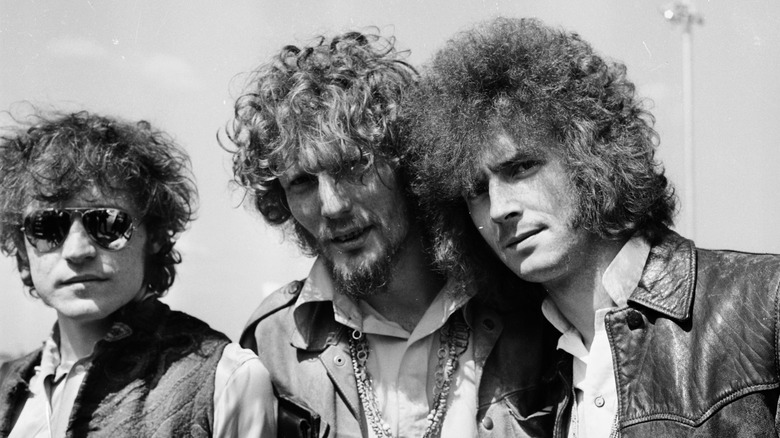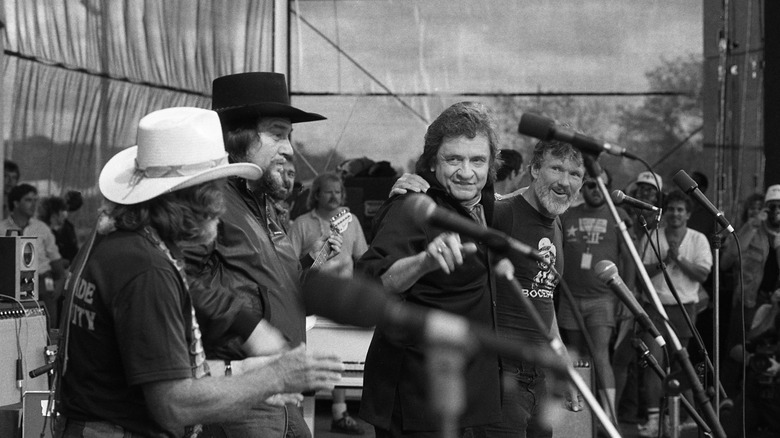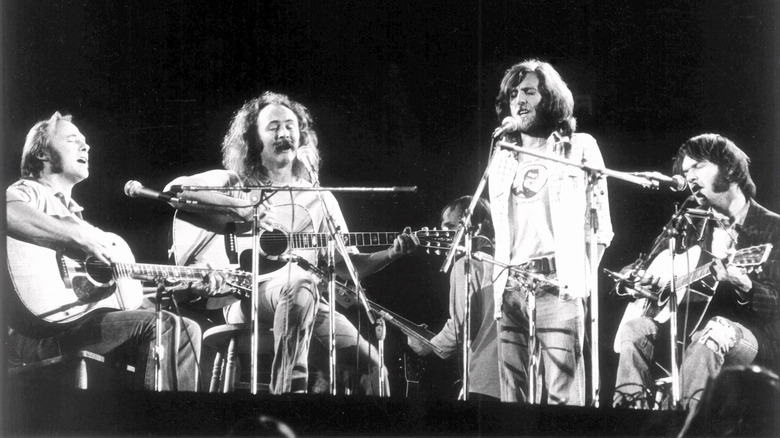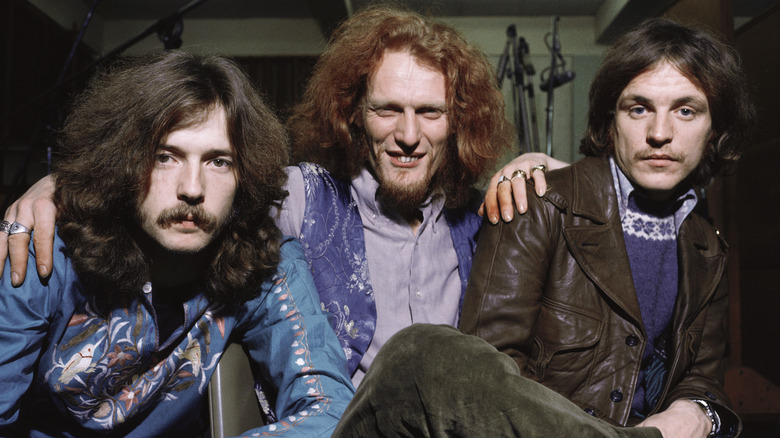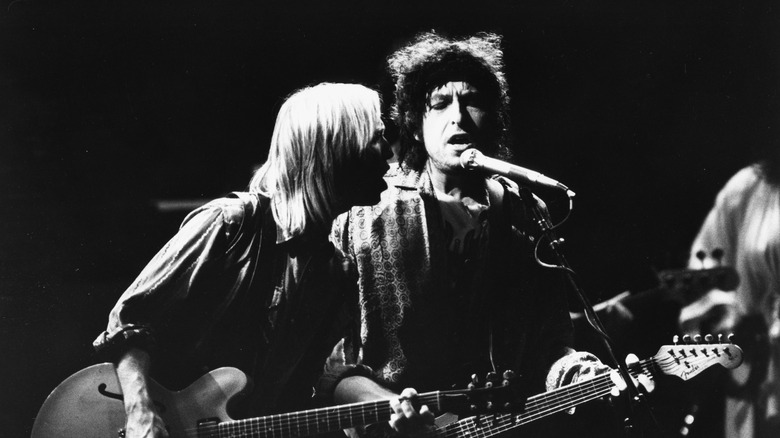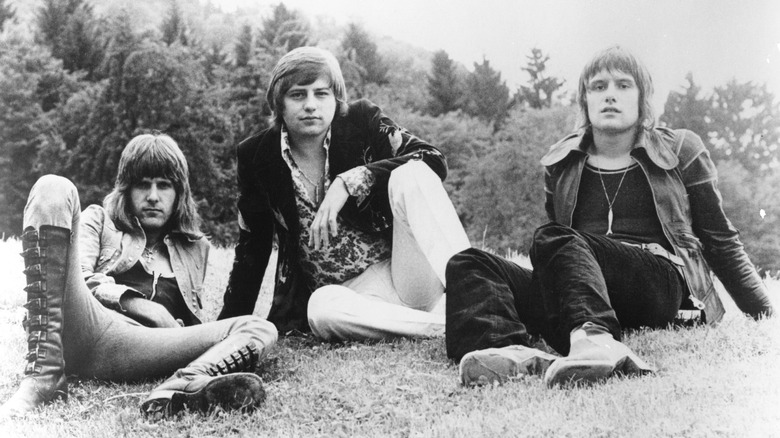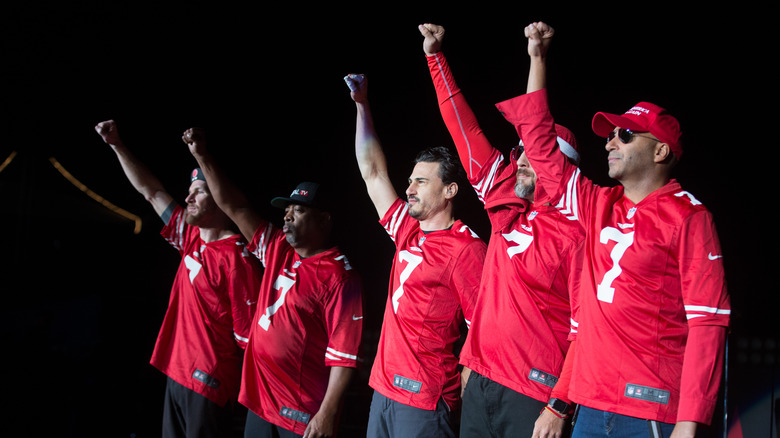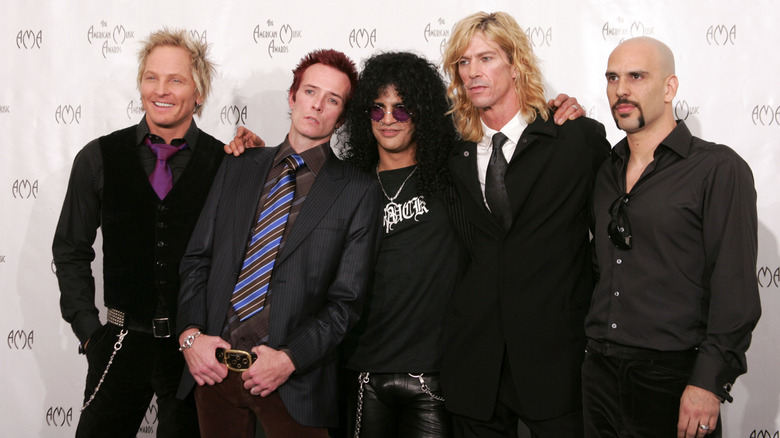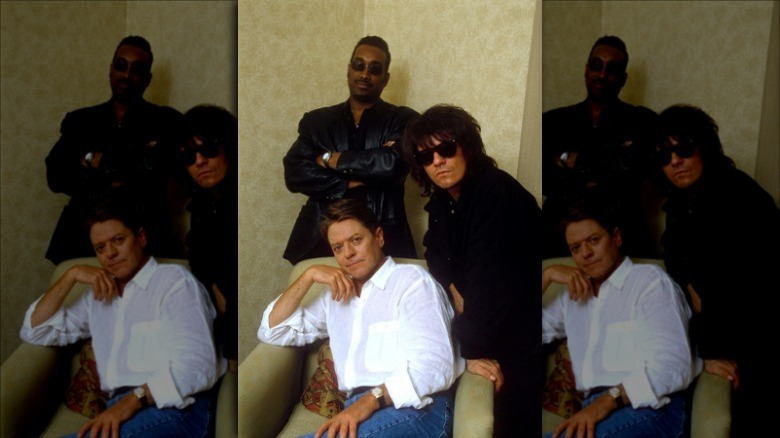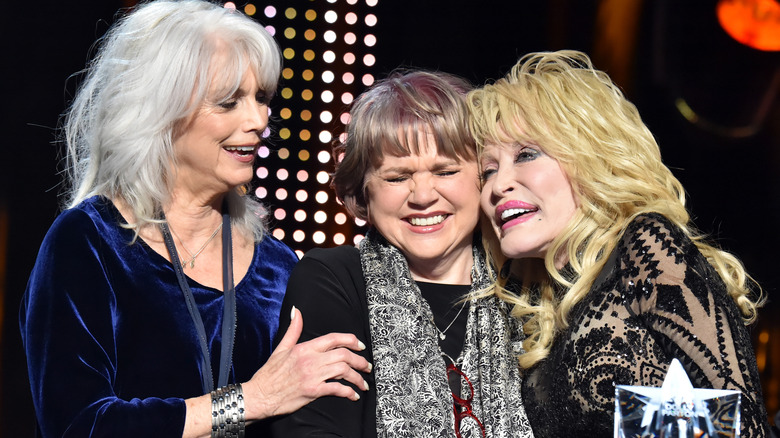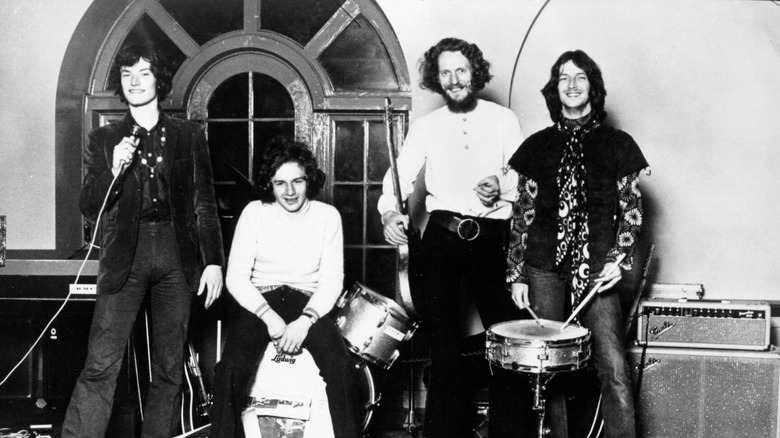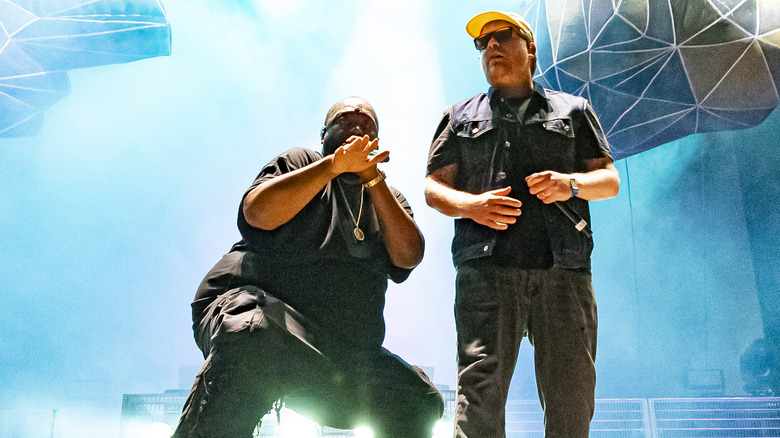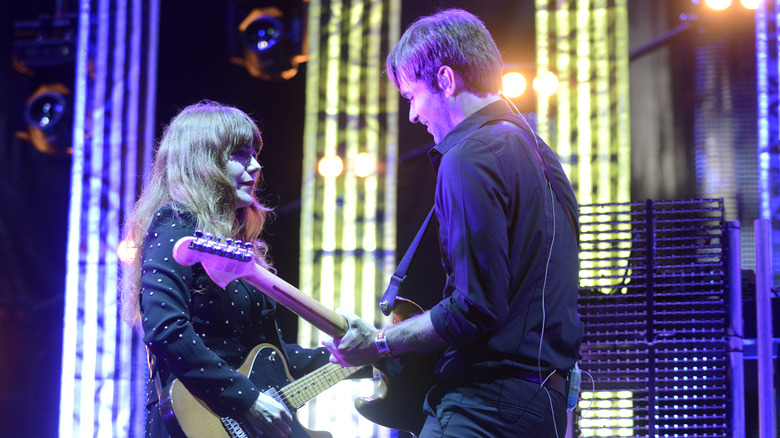The Best Supergroups In History
The formation of a supergroup is always exciting. While some groups have evolved into a sort-of supergroup after the individual members go on to superstardom post-breakup, a true supergroup is formed only when each member is already legendary. Two or more music superstars working together on new music is a recipe for awesomeness in any genre, and the formation of a supergroup has always generated a lot of hype and media attention.
Hype is, of course, one of the easiest things in the world to generate, and sometimes the hype surrounding a supergroup is never quite justified. Plenty of supergroups have formed to great fanfare only to fizzle out, dropping one underwhelming album—or no music at all—before splitting up and going their separate ways. And bringing together immense talent also tends to bring together immense egos, which can get in the way of making music.
But when things work out, even for a single album, a supergroup can leave an indelible mark on music history. The mix of creative approaches combined with superstar-levels of experience in terms of writing songs and performing in the studio can result in music that remains a vital part of pop culture decades later. No matter what your musical preferences or age, you undoubtedly know the bands on this list—here are the best supergroups in history.
The Highwaymen
When we think of "supergroups" we tend to think of rock bands. But back in 1984, one of the most successful and legendary supergroups of all time was formed by a quartet of country music icons: The Highwaymen.
As reported by The Boot, the story of The Highwaymen actually begins in 1977 when Jimmy Webb wrote and recorded the song "The Highwayman." A few years later, country megastar Glen Campbell recorded the song for his 1979 album of the same name. Flash forward to 1984, when, according to Rolling Stone, Johnny Cash managed to convince his friends Willie Nelson, Kris Kristofferson, and Waylon Jennings to film a Christmas television special with him in Switzerland.
According to Classic Country Music, Cash was concerned about his career at the time, because his record sales had been slipping. After jamming with the other three legends in-between tapings of the special, a producer suggested that Cash and Nelson record a duet—but their vocal styles didn't mesh well. That's when Marty Stuart, a member of Cash's band, suggested bringing in Jennings and Kristofferson and recording "The Highwayman" because the song had four verses and required no harmonizing. The result was an electrifying album and a No. 1 hit song. The group released two more records, sold millions of copies, and reaffirmed their status as some of the greatest artists country music had ever seen.
Crosby, Stills, Nash and Young
Crosby, Stills and Nash was already a supergroup. Formed in 1968 by David Crosby (of The Byrds), Graham Nash (from The Hollies), and Stephen Stills (of Buffalo Springfield), CS&N released their self-titled album in 1969 to huge success. But as reported by Ultimate Classic Rock, the group knew the time they'd spent slaving over their studio recordings meant they would struggle to reproduce the sound live. As noted by Classic Album Sundays, Stills had played so many instruments on the recordings there was no way to keep the arrangements without adding some musicians to the band.
Neil Young was put forward by the record label. Stephen Stills knew Young from Buffalo Springfield, where Young had been unreliable and self-centered—but it was Nash who resisted the idea, only coming around after Young charmed him at a breakfast meeting.
The super-supergroup's second album, "Déjà Vu" was an even bigger hit—eventually selling 7 million copies—but the superstars weren't exactly harmonious behind the scenes. Young immediately took charge — in his book "Shakey: Neil Young's Biography," author Jimmy McDonough writes, "Everyone was afraid of Neil. Because Neil walked. When Neil said ... I'm leaving, Neil left." And Young felt excluded from the core trio. As reported by Rolling Stone, the band broke up in 1970 after less than two years — and while they would reform a few times, the magic never quite returned. But their legacy remains two incredible albums.
Cream
As noted by Rolling Stone, chronologically, Cream might be considered the first-ever supergroup. All three members were established stars in the 1960s British rock scene: Eric Clapton hailed from The Yardbirds and was already known as one of the greatest blues guitarists of all time, Ginger Baker and Jack Bruce had both played in the successful band Graham Bond Organization, and Bruce had also played in the legendary band Manfred Mann.
But what made Cream even more notable is the fact that for the first time, a rock band featured a virtuoso on each instrument. Clapton is a guitar god, Baker was a genius on the drums, and Jack Bruce was one of the best bassists who ever lived.
As noted by Louder, Cream's influence was enormous. They existed for barely two years and released just four albums (one of which was mostly concert recordings), but their fusion of blues, rock, and jazz was influential to an entire generation of musicians — and remains influential today. Along the way, they broke records — uDiscover Music notes that their third album, "Wheels of Fire," was Britain's first platinum-selling double album — and released songs that are still pop culture staples today, like "Sunshine of Your Love" and "White Room."
The Traveling Wilburys
It's hard to believe The Traveling Wilburys actually happened. A high-wattage supergroup with a whimsical name, the band formed in 1988 and included rock legends Bob Dylan, Tom Petty, Roy Orbison, Jeff Lynne, and George Harrison. According to Far Out Magazine, as he prepared for the release of his solo album "Cloud Nine," George Harrison was asked by his record label to churn out one more original song. He happened to be hanging out with collaborator Lynne as well as Dylan, Petty, and Orbison, so they all chipped in and put together the song "Handle With Care."
According to uDiscover Music, everyone considered "Handle With Care" to be way too good of a song to just toss on a B-side. So these rock superstars just casually decided to form a supergroup and write a bunch more songs. They chose the name of the band from a private joke between Harrison and Lynne—and because they "didn't want it to sound like Crosby, Stills, Nash & Young, like a bunch of lawyers." They released "The Traveling Wilburys: Volume One" in 1988, and it went triple platinum.
As reported by Ultimate Classic Rock, Roy Orbison passed away just a few months later in December 1988. The band released one more album, the intentionally misnumbered "The Traveling Wilburys: Volume 3," in 1990, but the loss of Orbison was noted by critics and fans alike and the album didn't reach the perfection of the first.
Emerson, Lake & Palmer
Progressive rock — sometimes called "art rock" — can get a bad rap. Ambitiously mixing different musical traditions with elaborate, lengthy compositions, prog rock evolved in the late 1960s as a counterpoint to the rough, relatively simple blues-based music of an earlier era. According to Britannica, Keith Emerson, Greg Lake, and Carl Palmer were already famous as part of the British progressive rock scene. Emerson had been the main member of The Nice, Lake was the bassist and lead singer for the legendary King Crimson, and Palmer was a co-founder of Atomic Rooster.
As reported by The Vogue, Emerson and Lake met several times in 1969 while touring with their original bands. Discovering their shared musical sensibilities and styles, they decided to form a new band — but lacked a drummer. According to Prog Archives, when the duo approached the jazz-influenced Palmer, he was reluctant to leave an established band but was ultimately convinced by Lake — and Emerson, Lake & Palmer (ELP) was born.
The band enjoyed instant success. As noted by Louder, by the time they released their fourth album, 1973's all-time classic "Brain Salad Surgery," the band had already enjoyed several best-selling albums. The band's influence can't be understated: As noted by Rolling Stone, ELP raised progressive rock "from a black-light-in-the-basement listening experience into a stadium-filling phenomenon."
Prophets of Rage
Music has always been a force for change, but some musicians have taken a more active stance in social issues and politics. And in 2016, a group of the most outspoken musician-activists of all time got together to form a supergroup. As reported by Pitchfork, Tom Morello, Tim Commerford, and Brad Wilk of Rage Against the Machine joined Chuck D and DJ Lord from Public Enemy and B-Real from Cypress Hill to form Prophets of Rage, a band Morello described as "an elite task force of revolutionary musicians."
According to Rolling Stone, Morello was the main force that gathered these legendary artists together, and as noted by The Guardian, the group immediately dispelled any doubt they intended to be politically and socially engaged. They unveiled their slogan as #TAKETHEPOWERBACK, and The New Yorker reports that the band scheduled the beginning of their tour to coincide with the Republican National Convention in 2016, and called the tour "Make America Rage Again," just in case anyone doubted their activist intentions.
As reported by The Fader, the band released an EP and one album before breaking up in late 2019 following the news that Morello, Commerford, and Wilk would be rejoining Rage Against the Machine. Although short-lived, the supergroup served as a reminder that music doesn't have to be solely about the streams or the dancefloor — it can still be about changing the world.
Velvet Revolver
Velvet Revolver is a rare instance of a supergroup totally leaning into its status: As reported by Time, when former Guns N' Roses members Slash, Duff McKagan, and Matt Sorum decided to put together a new band in 2002, they filmed the process of selecting a new lead singer. That footage aired on VH1 a year later as "Inside Out: The Rise of Velvet Revolver." They eventually chose former Stone Temple Pilots frontman Scott Weiland for the gig, and also recruited Wasted Youth's guitarist Dave Kushner.
The pedigree of the members generated instant buzz, and the supergroup achieved instant success with their debut album "Contraband," which sold more than 2 million copies and earned the group two Grammy nominations (and one win, for Best Hard Rock Performance for the song "Slither"). It's safe to say that in the early days of the 21st century, Velvet Revolver was a pretty big deal.
The band burned brightly, but not for long. According to Ultimate-Guitar.com, their second album, "Libertad," was released to disappointing sales in 2007. The Vogue notes that Weiland left the group in 2008, and although the band auditioned new singers it never went forward, and effectively broke up. Ultimate Classic Rock notes that Weiland died in 2015, apparently ending any hope that Velvet Revolver will ever return to their brief, exciting glory.
The Power Station
By 1985, Duran Duran was one of the biggest bands in the world and, according to AllMusic, the members planned a year-long break from incessant touring and recording. Treblezine reports that the band's guitarist, Andy Taylor, was dating model Bebe Buell, who wanted to launch a music career. Taylor set about putting together a backing band for her to record a cover of T. Rex's "Bang a Gong (Get It On)." He recruited his Duran Duran bandmate John Taylor to play bass and Chic drummer Tony Thompson — then promptly broke up with Buell.
Taylor decided to press on, and initially, the band envisioned having different lead singers on different songs. According to Classic Rock History, the members of Duran Duran were big fans of singer Robert Palmer, and had met him in 1983 at a charity concert. Palmer was invited to record one song — but the band immediately knew they'd found their singer.
The band's debut self-titled album was a smash hit. SoundVapors reports it hit No. 6 on the Billboard charts and generated three Top 40 hit songs—two in the Top 10. Just as the band was planning a tour to support the album, however, Palmer shocked everyone by dropping out of the band. They hired Michael Des Barres of Silverhead fame to make the tour happen, and then promptly broke up. They re-formed in 1996 for one more album, but the magic was gone.
Trio
When looking at the history of supergroups, it can seem like it's all dudes, all the time. But in 1987, three of the most famous female singers in music history joined forces to form a country supergroup: Dolly Parton, Emmylou Harris, and Linda Ronstadt.
As reported by The Boot, the three singers had wanted to work together for years, but were prevented due to complex schedules and contractual problems (all three were signed to different record labels). They'd even gone into the studio together on occasion, and REBEAT Magazine reports that the three women had performed together many times going back as far as 1976, but the songs recorded in those earlier sessions wound up on their individual records.
According to Taste of Country, one day the three women were "just hanging out" and started to sing together — and the resulting sound was so good they knew they had to record an album. They faced resistance from their managers and their record labels but persisted. The album "Trio," released in 1987, sold four million copies and spawned four hit singles. After a lengthy break, the trio returned with "Trio II" in 1999—and promptly won a Grammy for Best Country Collaboration With Vocals. As noted by The Guardian, Trio's work was extremely influential and can be felt in modern-day all-female supergroups like the Pistol Annies.
Blind Faith
As noted by AllMusic, Blind Faith is a supergroup that managed to rise and fall within the space of a single year. The band began in 1969 when Eric Clapton's band Cream and Steve Winwood's band Traffic both fell apart. The guitarist and the singer/keyboardist started to jam at Winwood's country cottage — and according to Ultimate Classic Rock, former Cream drummer Ginger Baker heard about their collaboration and drove to the cottage to basically insist he be part of the new group. They added bassist Rick Grech from the band Family and Blind Faith was born.
According to Live for Live Music, the band launched with a series of free concerts despite Clapton's concerns that they weren't quite ready. While the concerts were huge successes, a lack of original material meant that the band had to supplement their sets with songs from everyone's former bands — meaning they often felt like they hadn't launched a new band at all.
When their debut — and only — album "Blind Faith" was released in 1969, it was an instant hit — and an instant classic. It eventually sold more than a million copies, and delivered one all-time great song to the classic rock canon: Steve Winwood's ethereal "Can't Find My Way Home." As noted by Louder, the band was soon embroiled in legal and personal conflicts. After a brief tour, Blind Faith broke up, a supergroup with an outsize influence on rock music.
Run the Jewels
Hip hop artists can form supergroups too — and you only need two stars to make a supergroup. According to Flavorwire, producer and rapper El-P heard Killer Mike's song "God in the Building II" in 2011 and thought it was genius. A few years later, they were introduced by Jason DeMarco of the Cartoon Network, who thought they could work together on a side project for one of his animated shows. Instead, they formed a supergroup.
As Rolling Stone explains, El-P came up as part of the New York underground rap scene, while Killer Mike hails from Atlanta and was part of OutKast's Dungeon Family. The New York Times reports they were both at professional low points when they met, dealing with career disappointments and personal losses. But their styles worked perfectly together and they found inspiration in each other — and Run the Jewels quickly became one of the biggest rap acts in the world.
As noted by The Guardian, what sets Run the Jewels apart is the combination of their old-school sound and their passionate dedication to progressive politics. Their songs frequently tackle topics of social justice and politics, and both Killer Mike and El-P are outspoken concerning their beliefs, and have even expressed their support of Bernie Sanders' policies.
The Postal Service
Only one thing stood in the way of Death Cab for Cutie's Ben Gibbard, producer and DJ Jimmy Tamborello, Rilo Kiley's Jenny Lewis, and Tattle Tale's Jen Wood forming a band together: Distance. As reported by AllMusic, Gibbard and Tamborello worked together in 2001, and continued to trade song ideas for years afterward — through the mail, literally mailing each other tracks back and forth.
Their debut album, "Give Up," was released in 2003. As noted by Paste Magazine, the band's sound is incredibly unique, fusing the indie-pop vocals and songwriting of Gibbard, Lewis, and Wood with the EDM beats created by Tamborello. The result eventually went platinum (per Pitchfork) and was record label Sub Pop's second biggest-selling release (after a little band called Nirvana), and its influence is still felt today. As noted by Rolling Stone, the band's music is regularly used in advertisements and films, and inspired a long list of "arty indie pop" bands excited by the revolutionary sound.
The band has yet to deliver a second album, but did release a live album stemming from their 2014 tour in 2020 that served to remind everyone just how terrific — and influential — they remain.
